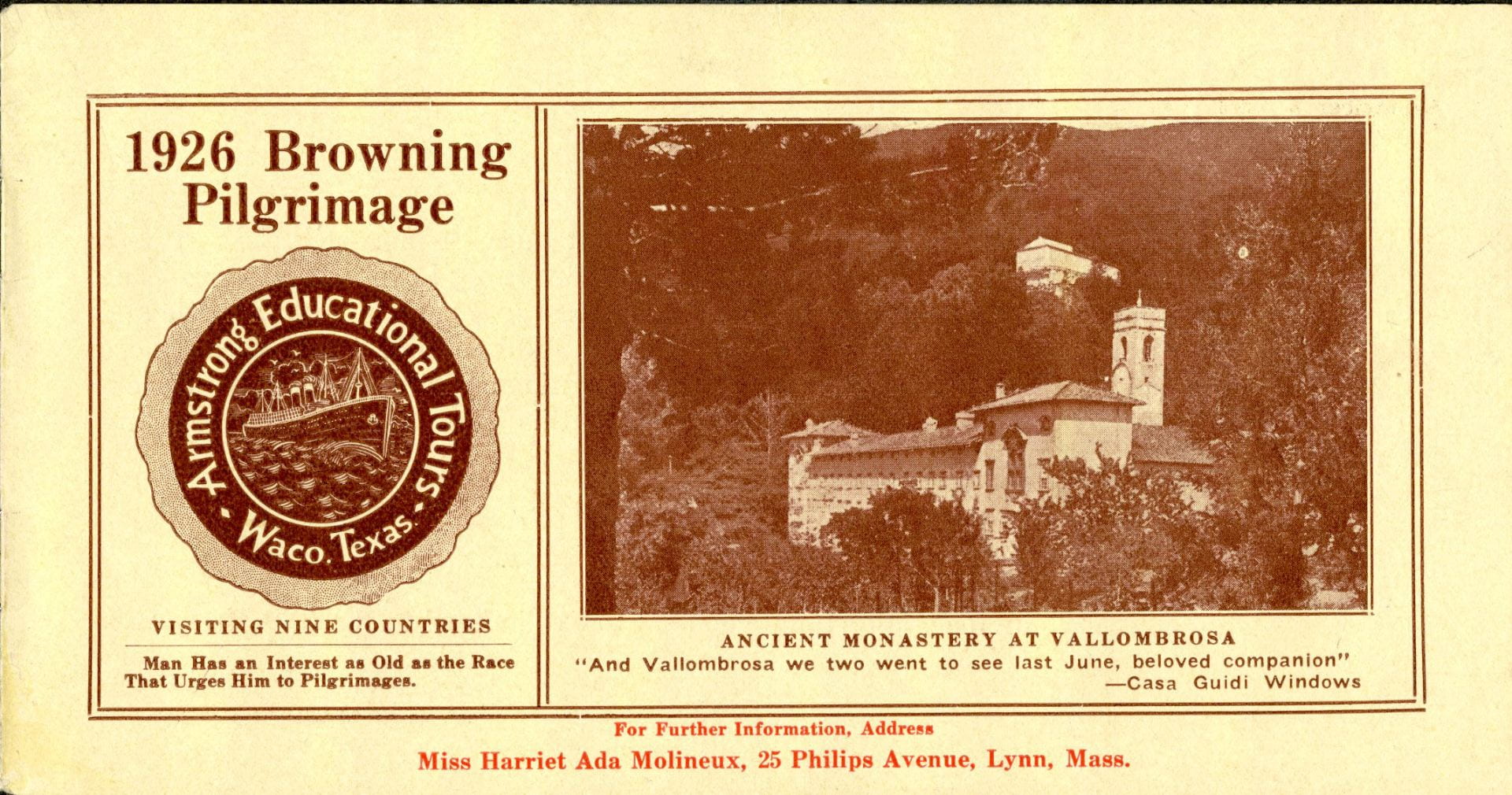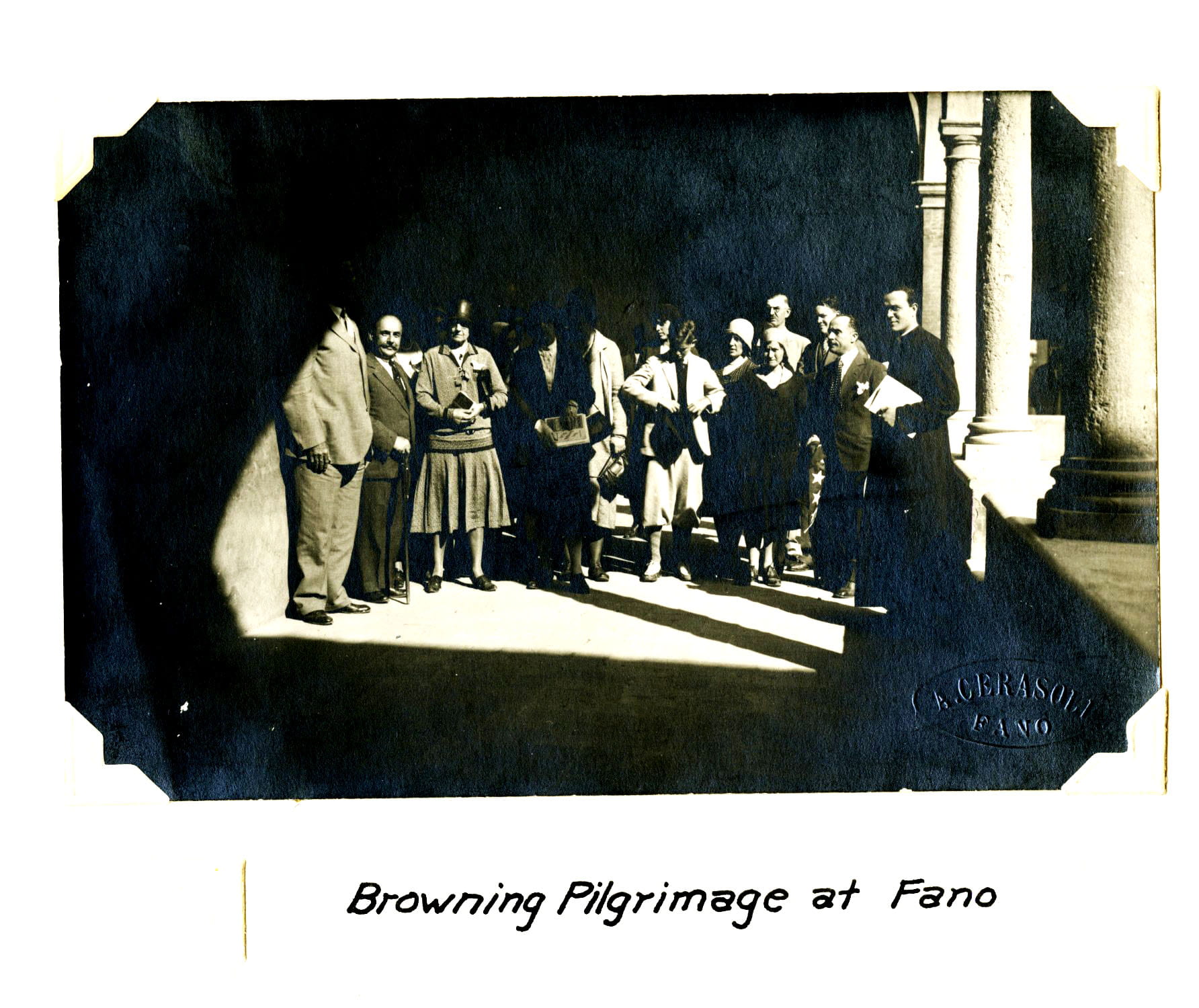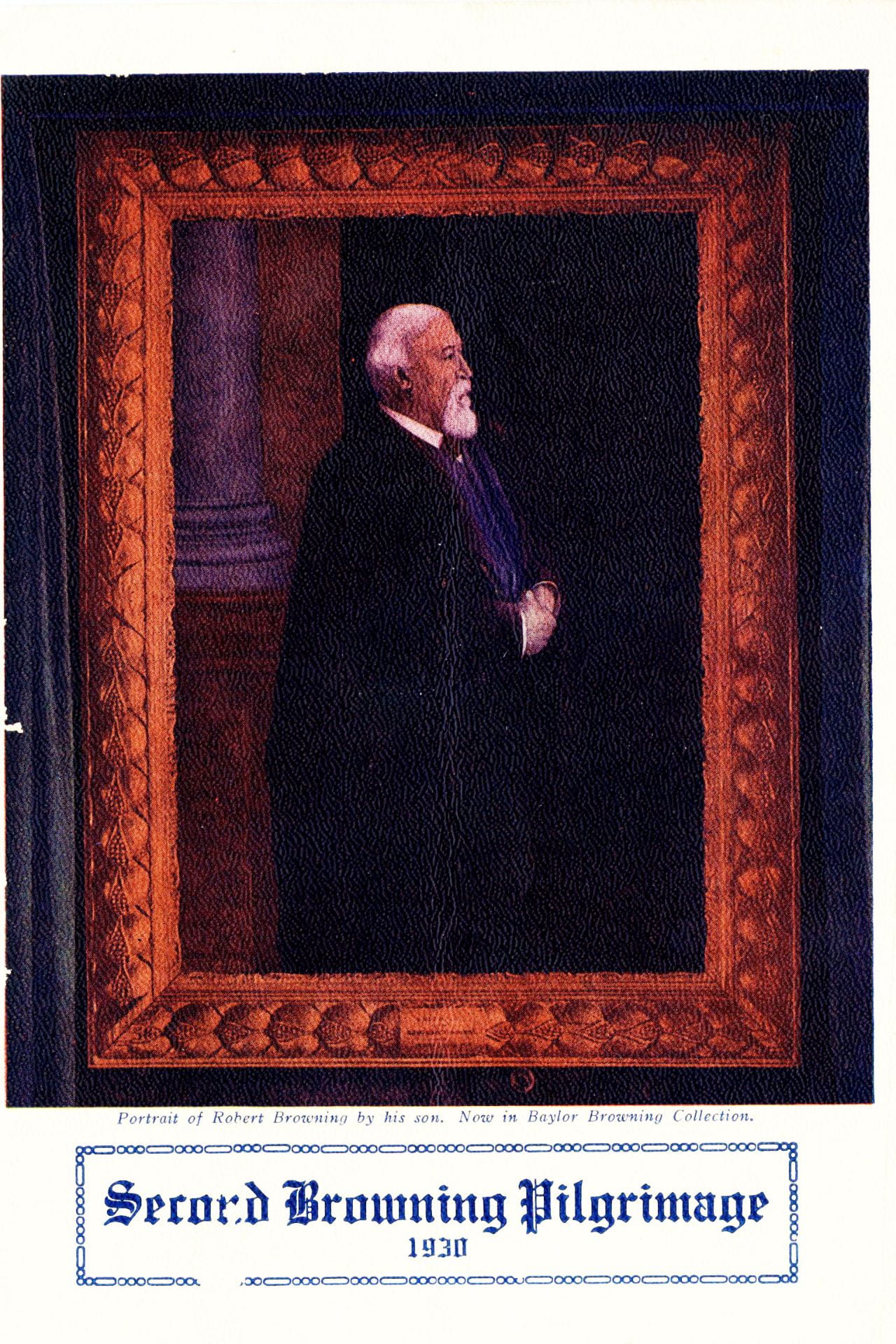by Rachel Jacob, Armstrong Browning Library Graduate Research Assistant
Part of my duties as a graduate research assistant at the Armstrong Browning Library involve looking through our collections to answer research questions people ask. A recent question related to the Armstrong tours caused me to look through the unprocessed collection of the tour company which Mary Armstrong, Dr. Armstrong’s wife, ran for many years. In researching this collection, I stumbled across the Browning pilgrimage which the Armstrong Educational Tours company created.

Brochure for the first Browning pilgrimage.
In 1926, the Armstrong Tour company offered an exciting tour of Europe highlighting areas of the Browning’s lives. The tour was infused with literary references and readings. The tourists, or “pilgrims”, would even have literary lectures given by Dr. Armstrong and European Browning scholars at various stops on the trip. Dr. Armstrong himself described the tour:
“This pilgrimage to the shrines of the most virile poet of the Nineteenth Century is a spontaneous growth, out of the minds and hearts of Browning Lovers of America. The tour will include all the interesting features along the usual path through artistic and literary and historic and scenic beauties of Europe. But, in addition to these, there will be excursions along the trail of the Brownings. This means charming excursions in out-of-the-way corners of Europe, which lend to this tour peculiar and gripping interest.”

Photograph of the Browning pilgrimage tour at Fano.
On the tour, the group visited important places in Robert Browning and Elizabeth Barrett Browning’s story including their home at Casa Guidi, Barrett Browning’s house at 50 Wimpole Street, the church where they were married, and the burial spot of Barrett Browning. The group also visited the Baths of Luca where Barrett Browning presented her Sonnets of the Portuguese to Browning. Another literary stop relating to the Browning’s works was the Piazza S. Lorenzo where the Old Yellow Book, the inspiration for the Ring and the Book, was found. The pilgrims even followed the trail of Pompelia and Caponsacchi while they were traveling. They were also able to visit Fano to see the Guardian Angel, for which Browning wrote his eponymous poem. During the trip, the pilgrims met significant people like Prince Fabrizio Cigala, the Governor of Calabria, professors at the University of Naples, and various Browning scholars and supporters.

Brochure for the second Browning pilgrimage.
The first tour must have been a success because in 1930 Armstrong Educational Tours offered a second Browning pilgrimage. This second pilgrimage had 19 pilgrims join on an even more expansive 5-month tour. The new additions to the tour included a trip to Ravenna to place a wreath on the grave of Dante and visit Ferrara which was associated with My Last Duchess. During their celebration in Rome for the fourth of July, the pilgrims met Contessa Zampini-Salazar, Count and Countess Vanutelli, and Donna Olivia Agresti-Rosetti, the niece of Christina and Dante Rossetti. While on the trip they even met the pope.
In discussing the second Browning pilgrimage, Dr. Armstrong remarked, “of all the twenty-odd tours I have made to Europe, this one was by far the most memorable.”
Although there was no documentation in this collection that shows the Armstrong tour company ever leading another Browning pilgrimage, Dr. Roger Brooks resurrected the trip in 1991. Dr. Brooks, the then director of the Armstrong Browning Library, offered a scaled-down week-long version of the trip. During the trip, Dr. Brooks participated in the wreath-laying ceremony at Browning’s grave in Westminster Abbey.
Going into this collection, I only expected to find an answer to the original research question, but instead, I was able to witness the dedication and impact of the Brownings that is still seen to this day.
